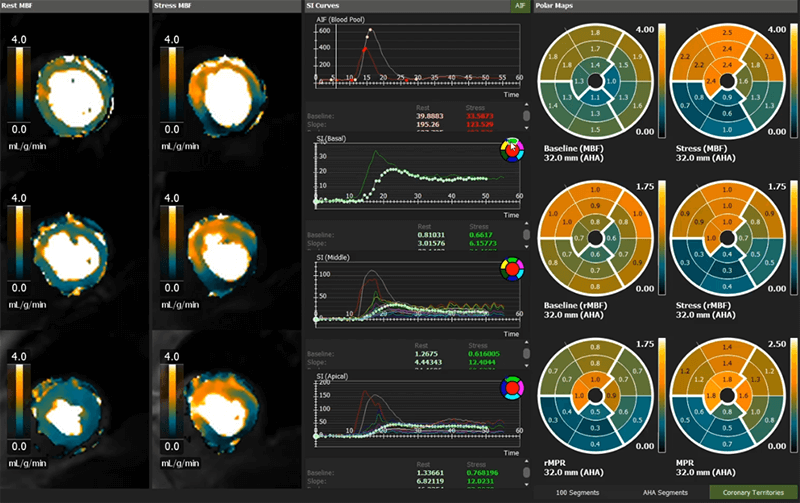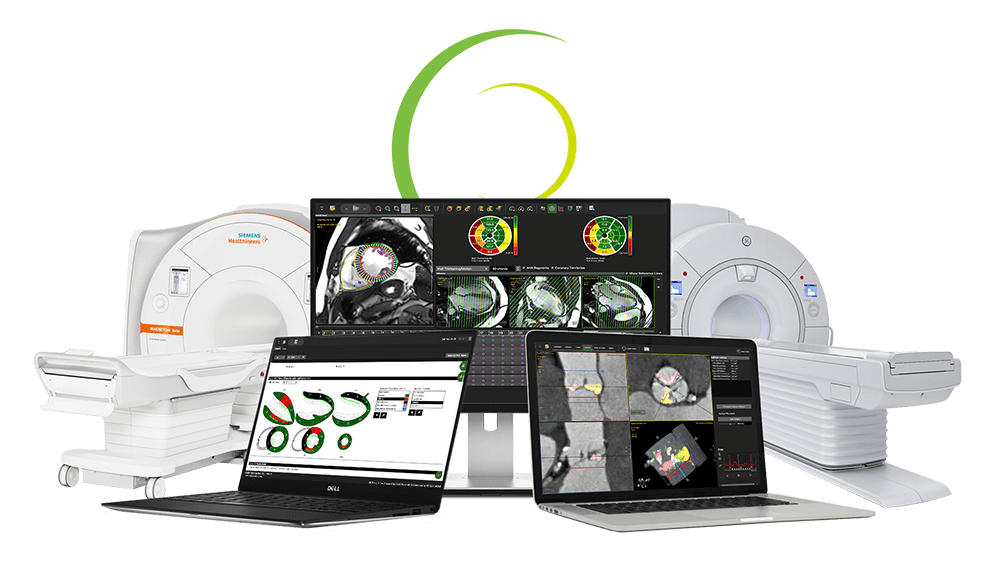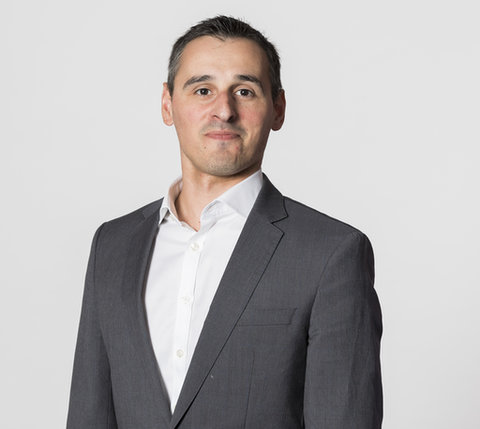Circle Cardiovascular Imaging
Fast-Forwarded
The Future of Cardiac Imaging
Circle Cardiovascular Imaging wants to do to the imaging industry what Apple did to the computer industry. Its plug-and-play vendor-neutral solutions aim to transform the future of cardiac MR and CT by turning qualitative visualizations into quantitative certainty and by accelerating tedious processing times into diagnostic clarity at the click of a button.
By Gergana Koleva
Circle Cardiovascular Imaging (Circle) is an imaging company primarily focused in the cardiovascular imaging space. Its signature reading and reporting solution, cvi42, allows physicians to analyze different categories of cardiac images on a single platform and helps inform therapeutic decisions. The software suite is used in over 1500 sites in more than 40 countries as a comprehensive imaging solution for cardiovascular MR (CMR), cardiovascular CT (CCT) images, and interventional planning. But what stands out the most when hearing its leaders describe their product is not the nitty-gritty of the cutting-edge technology, but rather the importance of people: providing reliable day-to-day support to their customers so they can practice at the top of their license without being held back by arduous workflows and excessive processing times.

Circle moves imaging from what is a qualitative measurement to quantitative measurement.
Greg Ogrodnick
CEO, Circle
The company aims to help practitioners grow professionally by learning new techniques and to make sure they are getting the most out of the software package at the same time as it remains sensitive to the need to adapt to different language and cultural norms in the different markets where it operates.
Circle´s cvi42 platform in its most current version, 5.11, is the crowning jewel of the company´s over 10-year evolution from a small educational platform in Berlin to a global medtech company developing AI-powered clinical-grade solutions. With fully embedded AI function, the solution not only achieves superior reporting speeds in the delivery of CMR and CCT results, but also encompasses fully automatic quantitative perfusion, image classification to improve contour detection, 4D flow measurement, myocardial strain analysis, electrophysiology, and interventional planning.
“With cvi42, the physician just needs to validate all of those results instead of having to draw circles and measure things by hand, as things were done a few years back. If you look back just three years down the line, it was not uncommon for physicians to take 10 minutes or more to measure a simple cardiac function. Now they can get the same results with the click of a button in a matter of seconds,” says Daniel Leite, Circle´s VP of Global Marketing, who shares the company´s state-of-the-art innovation without pomp, just facts.
Leite credits UK Biobank, one of the largest biobanks in the world, as one of the main sources for Circle´s advanced AI capabilities, thanks to the access the company has had to its data. The biobank contains anonymized health data from 500,000 volunteer participants and is open to all bona fide health researchers, which led Circle to partner with it in order to use the data to train the AI algorithms that power it today. “So really our AI algorithm function is the most tested in the world of cardiac MR specifically,” he says. Leite points out that the quantification of cardiac function using MR is a good example of a medical technology that hasn’t be leveraged using an AI-based tool in the past, but can now – and cvi42 is living proof of it.
“Circle moves imaging from what is a qualitative measurement to quantitative measurement,” says the company´s CEO, Greg Ogrodnick. The impact of this transition can be perhaps best appreciated when considering current approaches used to map complex cardiovascular flow patterns, such as myocardial perfusion – an ischemia test used to diagnose coronary artery disease. Visualization and qualitative assessment have always been standard techniques for interpreting perfusion results, but the company´s new technology, which transforms blood flow processes into a science through quantifying the results, takes the usefulness of the test for interventional planning an order of magnitude higher.
Multifunctional AI


Circle´s solution to automating workflows and cutting down on post-processing times while maintaining human performance level accuracy, has various configuration options so as to integrate seamlessly with any scanner, Mac, or PC device. It does so equally well at both small sites, such as community hospitals, and enterprise systems, regardless of local IT infrastructure. Its technology partners are some of the best-known brands in medical devices: Siemens Healthineers, GE Healthcare, Boston Scientific. It counts among its adoption sites nine of the 10 top hospitals in the world, including the Cleveland Clinic, the Johns Hopkins Hospital, the Charité hospital in Germany, and the CHU Saint-Étienne hospital in Switzerland. And as evidence of its meteoric rise to global relevance, the company has obtained 12 regulatory body clearances for cvi42 including US FDA and CE mark in the European Union.
The company attributes its international success largely to involving frontline users – that is, cardiologists and radiologists – from the start. “Circle is continuously engaging with key opinion leaders to make sure what we´re developing is meeting the market needs of the future,” says Scott Archibald, Circle´s Chief Product Officer.
Likewise, Circle spares no effort in supporting cardiac workshops and courses, helping physicians launch their own, and providing individual hands-on training in order to transfer that knowledge back to the community. The company says it aims to help practitioners grow professionally by learning new techniques and to make sure they are getting the most out of the software package at the same time as it remains sensitive to the need to adapt to different language and cultural norms in the different markets where it operates.
“We're looking at a lot of new scanners being installed and new sites being created, and that obviously creates a very big need for education. We need to not only provide a solution, but also answer to those markets fully and educate the users,” says Leite. In the same breath, he also underscores the company´s commitment to educating its own workforce.
“With having over 60 developers working on the platform, we want to make sure that they are educated not only to the technical aspects of all the programming, but also to the clinical aspects that they need to understand to develop a solution like this. Our focus on education is something in which we are quite unique.”
Global compatibility, user involvement and education

As a by-product of its close, early, and frequent collaborations with users, which have resulted in the development of highly intuitive innovative products with unassailable clinical accuracy, Circle does not face much competition in the market. Particularly as it concerns quantitative perfusion, the company claims it is the only one with a commercially available solution deploying such technology – something Leite says was also true of its previous technologies at the time they were released.
“Because we´ve been working directly with key opinion leaders, we have been able to build solutions that come from understanding the needs of the market and sometimes creating the needs in the market, as in the case of quantitative perfusion,” says Leite.
With its polyvalent cardiac imaging software having earned best-in-class status in the minds of physicians the world over, and with its continual updating and expansion of capabilities and applications, it is clear Circle is on a path to excellency. And just as Apple disrupted and transformed the computer industry forever, its imaging solutions may just be the push the imaging industry needs to discover its own untapped new powers.
Undisputed leadership


Because we´ve been working directly with key opinion leaders, we have been able to build solutions that come from understanding the needs of the market and really sometimes creating the needs in the market, as in the case of quantitative perfusion,
Daniel Leite, VP of Global Marketing, Circle